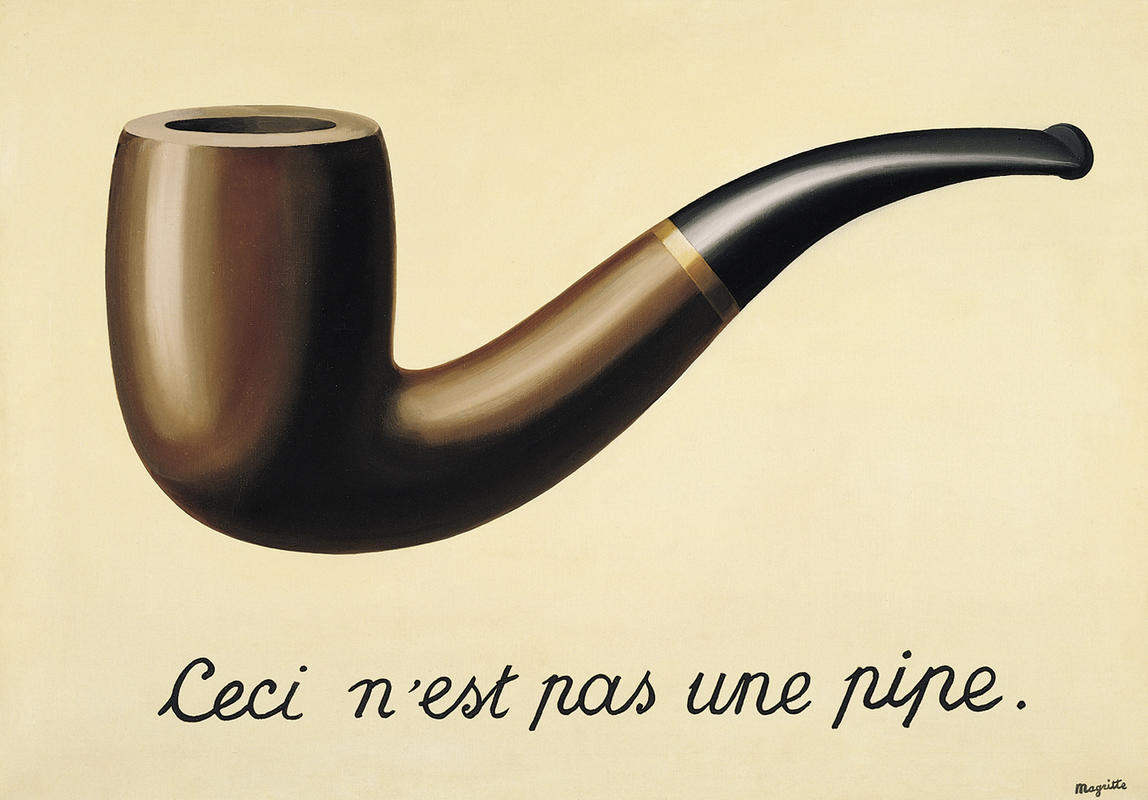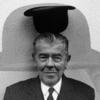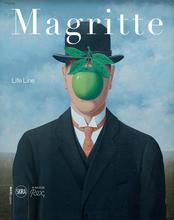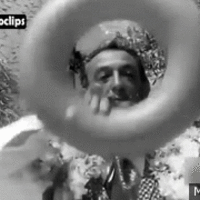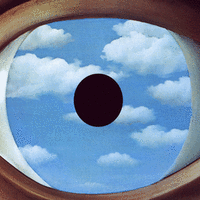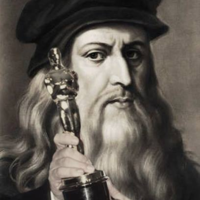More about The Treachery of Images
- All
- Info
- Shop
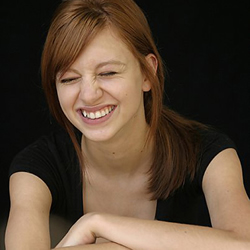
Sr. Editor
When Magritte debuted The Treachery of Images in 1929, people were not that amused.
A picture of a pipe with the words “Ceci n’est pas un pipe” (“This is not a pipe”) under it had most folks saying what you may be thinking: um, yes it is!
His point was that even if paintings are representational, they are only a symbol of the thing they represent. This may seem obvious, but it’s a pretty clever way to address the semiotic gap between the visual and the verbal and makes you think twice about the relationship we have with images. In true Surrealist fashion, Magritte is questioning the terms of reality we mostly take for granted. A picture of a thing is…not that thing! We make the connection ourselves, and Magritte and his dream-obsessed homies were attempting to disrupt that process, or at least make us more aware of how it works.
In order to do that, René Magritte made some weird art. Maybe he was smoking something stronger than tobacco in his infamous pipe?
Featured Content
Here is what Wikipedia says about The Treachery of Images
The Treachery of Images (French: La Trahison des Images) is a 1929 painting by Belgian surrealist painter René Magritte. It is also known as This Is Not a Pipe, Ceci n'est pas une pipe and The Wind and the Song. Magritte painted it when he was 30 years old. It is on display at the Los Angeles County Museum of Art.
The painting shows an image of a pipe. Below it, Magritte painted, "Ceci n'est pas une pipe", French for "This is not a pipe".
The famous pipe. How people reproached me for it! And yet, could you stuff my pipe? No, it's just a representation, is it not? So if I had written on my picture "This is a pipe", I'd have been lying!
— René Magritte
The theme of pipes with the text "Ceci n'est pas une pipe" is extended in Les Mots et Les Images, La Clé des Songes, Ceci n'est pas une pipe (L'air et la chanson), The Tune and Also the Words, Ceci n’est pas une pomme, and Les Deux Mystères.
The painting is sometimes given as an example of meta message conveyed by paralanguage, like the Alfred Korzybski's "The word is not the thing" and "The map is not the territory", as well as Denis Diderot's This is not a story.
On December 15, 1929, Paul Éluard and André Breton published an essay about poetry in La Révolution surréaliste (The Surrealist Revolution) as a reaction to the publication by poet Paul Valéry "Notes sur la poésie" in Les Nouvelles littéraires of September 28, 1929. When Valéry wrote "Poetry is a survival", Breton and Éluard made fun of it and wrote "Poetry is a pipe", as a reference to Magritte's painting.
In the same edition of La Révolution surréaliste, Magritte published "Les mots et les images" (his founding text which illustrated where words play with images), his answer to the survey on love, and Je ne vois pas la [femme] cachée dans la forêt, a painting tableau surrounded by photos of sixteen surrealists with their eyes closed, including Magritte himself.
Check out the full Wikipedia article about The Treachery of Images

